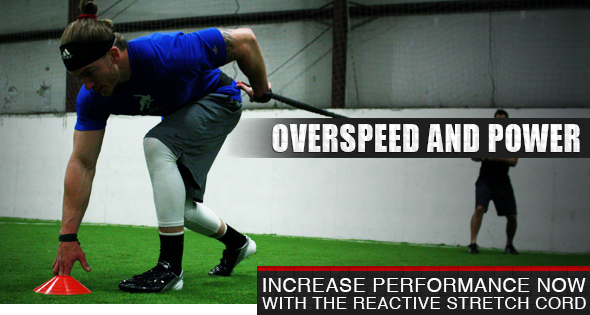Balance Exercises | RSC Stability Catches
Variety must be implemented during training sessions in order for athletes to continue to enhance their athletic performance. Simple things like adding resistance or weight to a plyometric drill can take a simple drill which can be completed with ease, to a challenging drill which engages and recruits more muscles than the original plyometric exercise.
Balance is one of the most overlooked athletic attributes. Athletes who exhibit greater balance also maintain greater body control and are at a greater advantage to stay on their feet after a slide tackle in soccer or recover quickly in the outfield after a misread on a fly ball. Since the overall goal of athletic training is to increase athletic output it is logical that as athletes advance, their training must advance along with them. This will continue to keep athletes at the top of their game and one step ahead of their competitors who are not only trying to out work you on the field but also during training.
Building Better Total Body Control With Balance Exercises
The RSC Stability Catches are a perfect example of taking a simple unresisted plyometric (lateral jumps) and adding resistance to generate greater muscle activation. This increase in the amount of muscle fibers fired in the legs and hips will lead to a greater number of muscle fibers activating during a balance exercise. Training these muscles helps to generate more muscle recruitment during competition as well as during training sessions.
To perform this balance exercise athletes will need a Reactive Stretch Cord, several Chaos Balls or baseballs, and two partners. To begin the balance exercise athletes will begin by securely attaching the Anchor Clip to the 360 D Ring located on the Adjustable Belt. Place the 360 D Ring to the side of the athlete while partners secure the anchor strap around their wrist. It is important to remember that the Reactive Stretch Cord only stretches 20 ft. Partners anchoring the Reactive Stretch Cord will stand at a distance which challenges the athlete performing the balance exercise, but does not exceed the 20 ft limit of the Reactive Stretch Cord. The partner not anchoring the Reactive Stretch Cord will hold 2 Chaos Balls or baseballs and stand 5-10 ft in front of the athlete.
To begin the balance exercise athletes will perform a lateral leap away from their anchoring partner, land and balance on their outside leg. Immediately following the athletes landing the partner with the Chaos Balls will throw a ball to the athlete which must be caught in the athletes outside hand. This drill is called a balancing exercise; therefore, it is important athletes focus on balancing on their outside leg as they land and make the single arm catch.
Athletes and partners need to communicate to make this balance training effective. If athletes are not able to get a good lateral jump then anchoring partners should move closer to provide less resistance. If athletes are jumping with ease and able to effortlessly complete all sets of the balance exercise then athletes need to move away from their anchoring partners, keeping within the 20 ft range of the Reactive Stretch Cord. Athletes must also communicate with the partner throwing the Chaos Ball as to whether partners need to make harder or softer throws.
Athletes will complete this balance training in a small group or team setting rotating with other teammates or partners anchoring or throwing balls during the balance exercise. Athletes will complete 12-15 continuous repetitions on one side of the body before performing the same number of reps on the opposite side of the body. Once athletes finish a set of the balance exercise they will quickly rotate with one of their partners so there is no down time during this balance training.
Following the resisted sets of the balance exercise athletes will remove the RSC Adjustable Belt and perform 2-3 unresisted sets of the balance exercise on each side of the body. The unresisted sets of this balance training will be slightly different as athletes continuously jump laterally back and forth making catches and returning the Chaos Ball each time they land. During unresisted sets athletes need to continue to maintain focus on balancing off the outside leg and then exploding laterally the opposite direction. Athletes will complete 4 repetitions of the unresisted balance exercise, jumping over and back for one repetition, then taking a 15 second break before jumping back into the next set. Athletes will not switch with partners during unresisted set and will complete all 2-3 sets at one time.
Getting The Most Out Of This Balance Exercise
In order to maximize this training time athletes need to be sure they are using proper technique and getting the most out of each repetition of the balance training. When athletes are landing or pushing off to jump laterally it is important they keep their toes pointed straight and do not let their feet begin to open up. Focusing on keeping the toes straight and pushing off with the outside part of the heel with help athletes keep this explosive movement in their glutes and hips. This balance exercise is a great way to work the glutes as they are challenged to be explosive during the jumping portion of the balance training and then trained eccentrically as they absorb the impact upon landing. Eccentric training is important as it affects an athlete’s ability to smoothly and quickly stop and change directions as well as its effect on an athletes balance.
Strength Training And Balance Training
This explosive movement is a great way for athletes to train their balance. By adding additional strength training athletes will be able to further their balancing abilities and full body control.
Earlier we discussed greater muscle activation while utilizing resistance with plyometric exercises. Moving from resisted to unresisted repetitions of this balance exercise will help to generate more of this muscle activation due to greater stress placed on the muscles during the resisted balance exercise.
To help this balance training translate into game situations athletes should utilize sports specific training following this balance exercise. Drills like the Power Leg Drive for baseball players, the Glute Bridge Leg Drive for volleyball players, or The Resisted Ball Handling Drill for basketball players are all great drills which will help athletes use what they have gained from their balance exercises and turn it into success during competition.
Baseball Training Equipment





